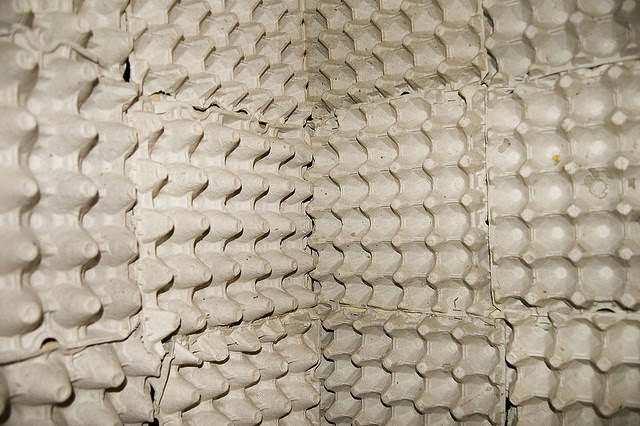Much has been debated whether soundproofing a room using egg cartons really do work. Over time, many people have disregarded using egg cartons as an effective way of containing sound in a specific area. The concept behind using egg cartons, as known, is due to the reason that its shape makes sound waves bounce back rather than travel past a flat surface such as the ceiling or walls. This is why some amateurs and professionals alike cover an entire room with egg cartons with this belief in mind. However, other professionals have disregarded the use of egg cartons as sound travels through any thin, solid materials, which includes egg cartons. On the other hand, if you do not have much money to fully soundproof your room using costly materials, you can try using cartons to see for yourself if it really does work. Below is a tutorial on how you can use egg cartons as a means of soundproofing a room.
- Preparation. The first thing you need to do is inspect the room that you plan to soundproof. Measure the size by using a construction-type measuring tape and get the dimensions of the room. Do not forget to include the ceiling as you will need to cover it as well. You will now need to collect a lot of egg cartons by basing the amount with the measurement of the room as opposed to each carton’s dimensions. From there you will have an idea of how much cartons you really do need. You will also need a glue gun to make the cartons stick to the wall. Either that or you can use a stapler to nail the egg cartons in the wall as well. Finally, you will need a ladder so that you may be able to reach the ceiling.
- How to do it. Begin by starting off in a corner of the wall, by stapling or gluing one at the lowest portion in the corner. Work your way horizontally until you reach the end. Then, work your way to another level and make sure that there are no spaces in between the cartons. When you finish with all the walls in the room, you may proceed to installing the egg cartons on the ceiling. Similar to the walls, make sure that there are no spaces or gaps in between the cartons. Finally, add a thick layer of carpet on the floor to further improve the quality of soundproofing.
Since it is highly doubted that merely using a layer of egg cartons will work in soundproofing your room since sound travels through thin solid materials, there is another way to work your way around that factoid. If you still can afford a few more sets of cartons, purchase them. Add another layer of egg cartons to the existing layer on your wall and ceiling. Check for the quality by asking neighbors if the volume can still be heard. If yes, then add another layer until you reach the desired result. Remember, the thicker the layer is, the more successful you will be in soundproofing the room. Good luck!
.png)























0 comments: